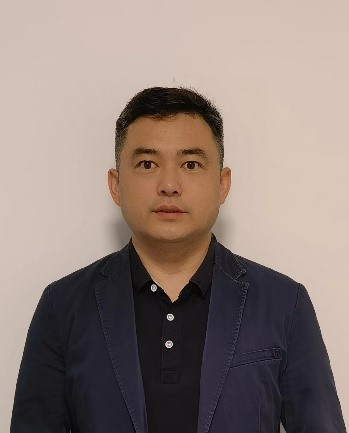Guangcai Yuan
Nanjing University, Nanjing, China
Guangcai Yuan
Nanjing University, Nanjing, China
Guangcai Yuan
TFTs for Display
No. 9 Dize Road, Economic Development Zone, Beijing, China
Email: yuanguangcai@boe.com.cn
Biography
|
Dr. Yuan Guangcai, professor-level senior engineer, doctoral supervisor, is currently the dean of the BOE Technology Group Display and Sensor Research Institute and the chief scientist of semiconductor technology. He has 15 years of R&D experience in the field of semiconductor display. He presided over more than 40 national and enterprise projects, authorized more than 300 patents, and published more than 50 papers. He has won 19 individual awards, including Beijing Outstanding Youth, Beijing Science and Technology Rising Star, and the First Prize of Science and Technology Progress of the Chinese Institute of Electronics. He has presided over the development of a number of new products and disruptive technologies, including: Oxide TFT R&D and industrialization technology Flexible OLED LTPO R&D and industrialization technology Mini/Micro-LED display technology research and development and industrialization technology Semiconductor display equipment technology: R&D and industrialization of thick Cu Dep and digital pattern technology |
The related technologies developed have been widely used in display products, and have made outstanding contributions to the technological breakthrough of my country's display industry.
Abstract for Presentation
Future oxide, Challenges and Applications
Recently, oxide semiconductors have received great attention in both the display and semiconductor industries. Oxide TFTs have obvious advantages in low off-current, large-area processing capability, and cost-effectiveness, but further improvement in mobility is required to enhance their competitiveness. This paper expounds the future development and challenges of oxides from the following three aspects: 1. Development trend and difficulties of oxide materials, including the related technologies and difficulties of material design and microstructure ordering; 2. Discussion about the electric–photo–thermal-mechanical stability mechanism of high mobility oxide technology, and solutions to the current fluctuation and threshold voltage shift caused by hot electrons, trapped electrons, and photo-generated electrons under high current and bias illumination; 3. The future applications of high mobility oxide technology, especially the breakthroughs in device structure and product form.
WELCOME TO CHINA TO ATTEND THE ICANS
23-26 August, Nanjing, China
Connect with us:



